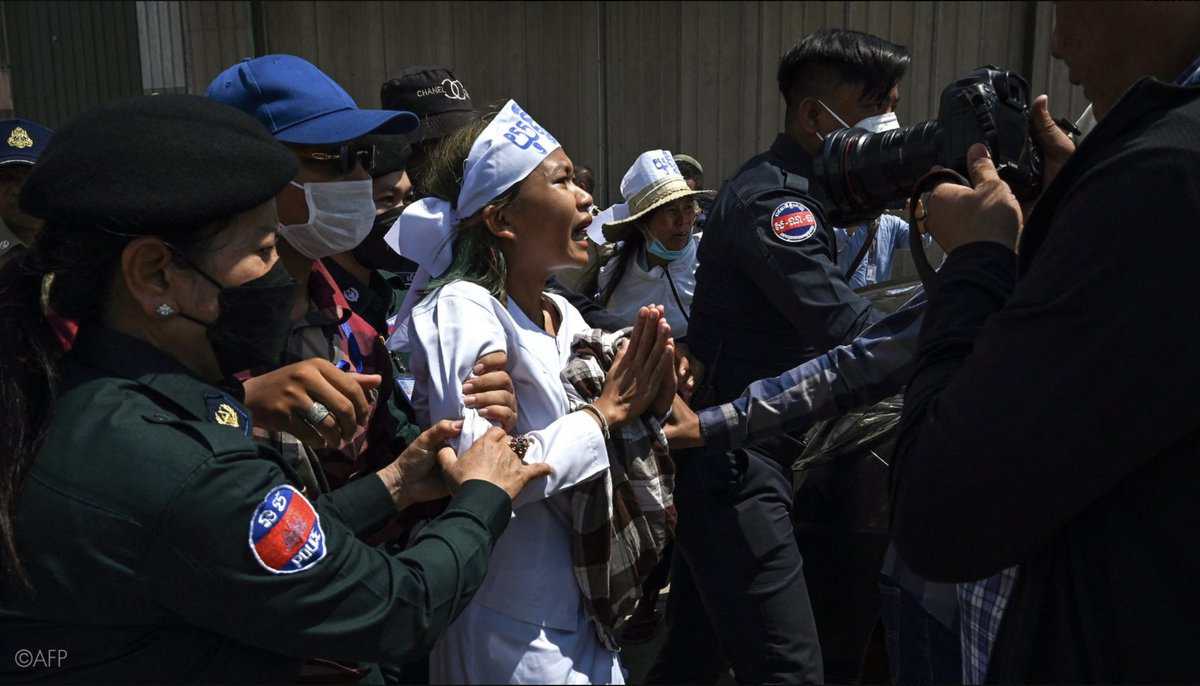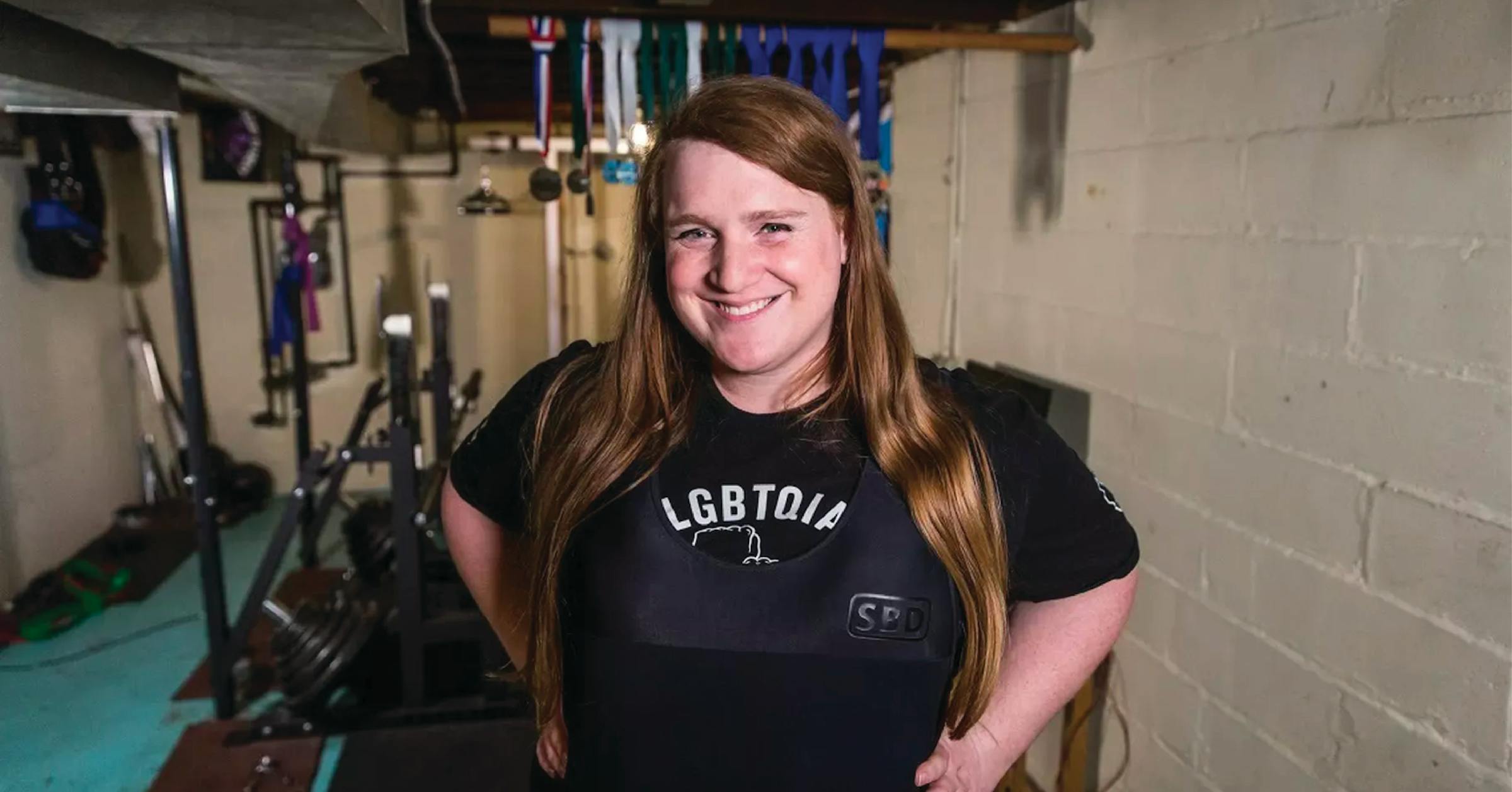Report on Urban Heat Resilience and Sustainable Development in Indian Cities
Introduction: Urban Heat as a Challenge to Sustainable Development Goals
Increasingly frequent and intense heat waves in Indian urban centers, exacerbated by the Urban Heat Island (UHI) effect from rapid, unplanned development, pose a significant threat to sustainable development. This phenomenon, driven by the replacement of green spaces with heat-absorbent concrete surfaces, undermines progress toward several Sustainable Development Goals (SDGs). The reliance on energy-intensive cooling mechanisms like air conditioning creates a negative feedback loop, increasing energy demand and ambient temperatures, which conflicts with SDG 7 (Affordable and Clean Energy) and SDG 13 (Climate Action). A systemic shift is required to build cities that are inherently cooler and more equitable, aligning urban development with the principles of SDG 11 (Sustainable Cities and Communities).
Disproportionate Impacts and Setbacks to SDG Attainment
Health, Inequality, and Livelihood Vulnerabilities
The impacts of extreme urban heat are not evenly distributed, deepening existing social divides and directly impeding SDG 10 (Reduced Inequalities). Vulnerable populations bear the most severe consequences.
- Informal Settlement Dwellers and Outdoor Workers: These groups experience heightened exposure to heat stress, leading to adverse health outcomes, reduced productivity, and economic instability. This challenges the objectives of SDG 3 (Good Health and Well-being) and SDG 8 (Decent Work and Economic Growth).
- Gender-Specific Burdens: Women, particularly in the informal sector, face compounded vulnerabilities. For example, female garment factory workers in Tamil Nadu endure extreme indoor temperatures without adequate protection, such as heat monitoring or scheduled breaks. This, combined with domestic responsibilities, leads to severe physical and mental exhaustion, highlighting a failure to protect women’s health and rights as outlined in SDG 5 (Gender Equality).
Analysis of Current Heat Mitigation Frameworks
Shortcomings of Heat Action Plans (HAPs)
India’s current Heat Action Plans (HAPs) are often insufficient to address the complexities of urban heat, thereby limiting their effectiveness in supporting SDG 11 and SDG 13.
- Top-Down Approach: HAPs frequently lack local context and community input, failing to address the specific vulnerabilities related to gender, caste, and livelihood.
- Underfunding and Lack of Sustainability: Many initiatives are short-sighted and lack long-term maintenance policies. The non-functional air-conditioned bus stops in Kolkata and inadequately equipped night shelters in New Delhi exemplify projects that fail due to a lack of sustained policy and financial support.
- Focus on Short-Term Relief: The emphasis on temporary, reactive measures over systemic, preventative solutions fails to build long-term resilience.
Advancing Sustainable Cities Through Community-Led Climate Action
Case Studies in Effective, Bottom-Up Solutions
Community-driven initiatives demonstrate a viable path toward creating heat-resilient urban environments that align with multiple SDGs. These models emphasize partnership and local knowledge, key components of SDG 17 (Partnerships for the Goals).
- Mahila Housing Trust: This organization introduced cost-effective, co-created housing technologies in informal settlements. Innovations like Mod-Roofs (recycled materials) and Air Lite Ventilators reduce indoor temperatures, lower energy costs, and improve health and productivity, directly contributing to SDG 3, SDG 7, and SDG 11.
- Kochi’s Kawaki Initiative: By empowering communities to lead urban greening efforts in collaboration with the municipal corporation, this initiative enhances green cover, reduces heat stress, and restores natural ecologies. This nature-based solution is a model for achieving SDG 11, SDG 13, and SDG 15 (Life on Land).
- YUVA’s Community Climate Action Plan (CCAP) in Mumbai: Through participatory climate vulnerability mapping in the Ambujwadi settlement, residents and the NGO YUVA developed a CCAP. This plan, supported by the Brihanmumbai Municipal Corporation (BMC), is now guiding the creation of green spaces and stormwater drains, building resilience and serving as a scalable model for inclusive urban planning (SDG 11, SDG 13, SDG 17).
Recommendations for Systemic Heat Resilience
Integrating SDGs into Urban Heat Policy
To create holistic and effective solutions, a fundamental shift from isolated fixes to systemic change is necessary. This requires embedding heat resilience into the fabric of everyday urban infrastructure and policy.
- Reform Heat Action Plans: HAPs must be redesigned from the ground up to incorporate local contexts, gender rights, and labour protections, ensuring they advance SDG 5, SDG 8, and SDG 10.
- Prioritize Systemic Solutions: Urban planning must move beyond personal cooling devices and temporary shelters to focus on building inherently cooler cities through green infrastructure, sustainable building materials, and the restoration of natural ecosystems.
- Strengthen Multi-Stakeholder Collaboration: Achieving sustainable and equitable heat resilience requires robust partnerships between civil society organizations, urban planners, local governments, and funders, as envisioned in SDG 17. By working together, these stakeholders can ensure that community-led solutions are documented, supported, and integrated into broader climate adaptation frameworks.
Analysis of Sustainable Development Goals (SDGs) in the Article
1. Which SDGs are addressed or connected to the issues highlighted in the article?
- SDG 3: Good Health and Well-being
- SDG 5: Gender Equality
- SDG 8: Decent Work and Economic Growth
- SDG 10: Reduced Inequalities
- SDG 11: Sustainable Cities and Communities
- SDG 13: Climate Action
- SDG 17: Partnerships for the Goals
2. What specific targets under those SDGs can be identified based on the article’s content?
-
SDG 3: Good Health and Well-being
- Target 3.d: Strengthen the capacity of all countries, in particular developing countries, for early warning, risk reduction and management of national and global health risks.
- The article highlights that extreme heat causes “health risks,” “mental exhaustion,” and poses “serious risks to their health and productivity,” especially for vulnerable populations. The discussion on the failures of current Heat Action Plans (HAPs) points to a need to strengthen risk reduction and management related to heatwaves.
- Target 3.d: Strengthen the capacity of all countries, in particular developing countries, for early warning, risk reduction and management of national and global health risks.
-
SDG 5: Gender Equality
- Target 5.5: Ensure women’s full and effective participation and equal opportunities for leadership at all levels of decision-making in political, economic and public life.
- The article specifically mentions the vulnerability of women in garment factories in Tamil Nadu who suffer from extreme heat, poor ventilation, and lack of basic amenities like drinking water. It calls for Heat Action Plans to “incorporate gender rights,” implying a need to address these gender-specific vulnerabilities in policy and workplace environments.
- Target 5.5: Ensure women’s full and effective participation and equal opportunities for leadership at all levels of decision-making in political, economic and public life.
-
SDG 8: Decent Work and Economic Growth
- Target 8.8: Protect labour rights and promote safe and secure working environments for all workers, including migrant workers, in particular women migrants, and those in precarious employment.
- The article details the harsh conditions faced by India’s informal workforce, including “factory and construction workers, and street hawkers,” who “continue to toil without any protection from extreme heat.” The example of garment factory workers with no scheduled breaks or heat monitoring systems directly relates to the need for safer working environments.
- Target 8.8: Protect labour rights and promote safe and secure working environments for all workers, including migrant workers, in particular women migrants, and those in precarious employment.
-
SDG 10: Reduced Inequalities
- Target 10.2: By 2030, empower and promote the social, economic and political inclusion of all, irrespective of age, sex, disability, race, ethnicity, origin, religion or economic or other status.
- The article emphasizes that “cities are also sites of deep inequality” and that “People from underprivileged communities, especially those living in informal settlements and working outdoors… experience the impacts of extreme heat far more severely.” This directly addresses the unequal burden of climate impacts on different socio-economic groups.
- Target 10.2: By 2030, empower and promote the social, economic and political inclusion of all, irrespective of age, sex, disability, race, ethnicity, origin, religion or economic or other status.
-
SDG 11: Sustainable Cities and Communities
- Target 11.1: By 2030, ensure access for all to adequate, safe and affordable housing and basic services and upgrade slums.
- The article focuses on the severe heat impacts on “people living in informal settlements” and highlights solutions like Mahila Housing Trust’s cost-effective technologies (Mod-Roofs, Air Lite Ventilators) to improve thermal comfort in these areas.
- Target 11.3: By 2030, enhance inclusive and sustainable urbanization and capacity for participatory, integrated and sustainable human settlement planning and management in all countries.
- The article critiques “unplanned urban growth” and advocates for community-led planning, citing the example of YUVA’s Community Climate Action Plan (CCAP) in Mumbai, where residents collaborated on climate vulnerability mapping and planning.
- Target 11.7: By 2030, provide universal access to safe, inclusive and accessible, green and public spaces, in particular for women and children, older persons and persons with disabilities.
- The text laments the “removal of green spaces” due to rapid urbanization and promotes solutions like the Kawaki Initiative in Kochi, which “empowers communities to lead urban greening efforts” to reduce heat stress.
- Target 11.1: By 2030, ensure access for all to adequate, safe and affordable housing and basic services and upgrade slums.
-
SDG 13: Climate Action
- Target 13.1: Strengthen resilience and adaptive capacity to climate-related hazards and natural disasters in all countries.
- The entire article is centered on adapting to extreme heat, a climate-related hazard. It critiques current Heat Action Plans (HAPs) for being ineffective and advocates for systemic, “heat-resilient solutions” that are embedded into urban infrastructure and policy.
- Target 13.1: Strengthen resilience and adaptive capacity to climate-related hazards and natural disasters in all countries.
-
SDG 17: Partnerships for the Goals
- Target 17.17: Encourage and promote effective public, public-private and civil society partnerships, building on the experience and resourcing strategies of partnerships.
- The article concludes by stating that “civil society organisations, urban planners, local governments, and funders must work together.” It provides successful examples of such partnerships, like the collaboration between the NGO YUVA, residents of Ambujwadi, and the Brihanmumbai Municipal Corporation (BMC).
- Target 17.17: Encourage and promote effective public, public-private and civil society partnerships, building on the experience and resourcing strategies of partnerships.
3. Are there any indicators mentioned or implied in the article that can be used to measure progress towards the identified targets?
-
For SDG 11 (Sustainable Cities and Communities)
- Implied Indicator for Target 11.1: The proportion of the urban population living in informal settlements with access to resilient housing.
- The article mentions the Mahila Housing Trust’s work in providing “cost-effective heat adaptation technologies” in informal settlements. Progress could be measured by tracking the number of households in these areas that have adopted such technologies (e.g., Mod-Roofs that reduce indoor temperatures by 6-8°C).
- Implied Indicator for Target 11.7: The area of green space as a proportion of a city’s total area.
- The article discusses the “removal of green spaces” and highlights the Kawaki Initiative’s efforts to “plant and maintain trees.” Progress could be measured by monitoring the increase in urban green cover resulting from such community-led initiatives.
- Implied Indicator for Target 11.1: The proportion of the urban population living in informal settlements with access to resilient housing.
-
For SDG 13 (Climate Action)
- Implied Indicator for Target 13.1: The number of local governments that have adopted and implemented local climate change adaptation strategies.
- The article critiques India’s Heat Action Plans (HAPs) for lacking local context and being underfunded. A key indicator of progress would be the development and successful implementation of community-informed, well-funded HAPs, such as the Community Climate Action Plan (CCAP) in Mumbai, which became a guiding document for the city.
- Implied Indicator for Target 13.1: The number of local governments that have adopted and implemented local climate change adaptation strategies.
-
For SDG 8 (Decent Work and Economic Growth)
- Implied Indicator for Target 8.8: The existence and implementation of policies to protect workers from occupational hazards related to extreme heat.
- The article notes the absence of “heat monitoring systems” and “scheduled breaks” for garment factory workers. An indicator of progress would be the adoption and enforcement of regulations requiring such protective measures in workplaces, especially for outdoor and informal sector workers.
- Implied Indicator for Target 8.8: The existence and implementation of policies to protect workers from occupational hazards related to extreme heat.
4. Table of SDGs, Targets, and Indicators
| SDGs | Targets | Indicators (Identified or Implied in the Article) |
|---|---|---|
| SDG 3: Good Health and Well-being | 3.d: Strengthen capacity for early warning, risk reduction and management of health risks. | Effectiveness and community-reach of Heat Action Plans (HAPs) in mitigating health risks like heatstroke and exhaustion. |
| SDG 5: Gender Equality | 5.5: Ensure women’s full and effective participation and equal opportunities for leadership. | Inclusion of gender-specific vulnerabilities and rights in climate adaptation policies and Heat Action Plans. |
| SDG 8: Decent Work and Economic Growth | 8.8: Protect labour rights and promote safe and secure working environments for all workers. | Implementation of protective measures for workers exposed to extreme heat (e.g., scheduled breaks, access to water, heat monitoring systems). |
| SDG 10: Reduced Inequalities | 10.2: Empower and promote the social, economic and political inclusion of all. | Reduction in the disproportionate impact of heat on vulnerable groups (e.g., residents of informal settlements, outdoor workers). |
| SDG 11: Sustainable Cities and Communities | 11.1: Ensure access for all to adequate, safe and affordable housing and basic services and upgrade slums. | Proportion of households in informal settlements with access to cooling technologies like Mod-Roofs and ventilators. |
| 11.3: Enhance inclusive and sustainable urbanization and capacity for participatory human settlement planning. | Number of cities implementing community-developed climate action plans (like Mumbai’s CCAP). | |
| 11.7: Provide universal access to safe, inclusive and accessible, green and public spaces. | Increase in urban green cover through community-led initiatives (like Kochi’s Kawaki Initiative). | |
| SDG 13: Climate Action | 13.1: Strengthen resilience and adaptive capacity to climate-related hazards. | Number of local governments with operational, funded, and community-integrated heat resilience plans. |
| SDG 17: Partnerships for the Goals | 17.17: Encourage and promote effective public, public-private and civil society partnerships. | Number of successful collaborations between CSOs, local governments, and communities for climate resilience (e.g., YUVA and BMC). |
Source: india.mongabay.com

![Reimagining cooler cities that reduce inequalities [Commentary] – Mongabay-India Reimagining cooler cities that reduce inequalities [Commentary] – Mongabay-India](https://imgs.mongabay.com/wp-content/uploads/sites/30/2025/10/19223107/IMG_3249-768x512.jpg)





